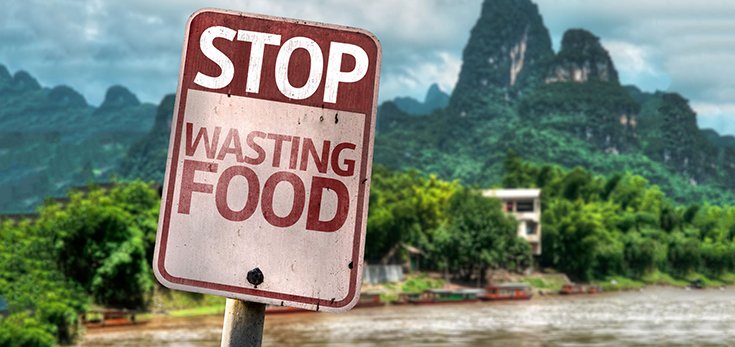New Utah Facility Will Turn Food Waste into Renewable Energy

Food waste is a huge problem for the United States. As a wealthy nation, we often take our supermarkets full of food for granted. Thankfully there are many initiative popping to tackle this problem, with one example being seen at Salt Lake City, Utah, where a facility will reduce landfill waste and turn food waste into renewable energy. [1]
Set to open in late 2018, the facility will use anaerobic digesters to grind and liquefy food waste, then use water, heat and bacteria to convert it into methane gas. The methane will eventually be used as natural gas and the bio-solids will be converted into fertilizer.
Anaerobic digestion is biological process in which microbes break down biodegradable material without oxygen.

The project is called Wasatch Research Recovery, a cooperative partnership between Salt Lake City-based ALPRO Energy & Water and the South Davis Sewer District. Businesses across the state will be invited to send the facility its food waste.
The aim of the project is to save space in landfills, and reduce greenhouse gas emissions from buried organic garbage, as well as provide businesses with a cost-effective alternative for disposing of their food waste.
Businesses across Utah such as Swire, a producer and distributor of Coca-Cola products, have already signed on to deposit their food waste at Wasatch Research Recovery. Any business that produces organic food waste is welcome to participate, officials said, including restaurants, hospitals, hotels, conference centers, breweries, and food manufacturers.
Read: Key Report Outlines 27 Solutions to Reduce Food Waste and Save $100 Billion
Much more than fruit and vegetable peels will be going into the digesters; fats, oils, grease, uneaten food, and even foods still packaged – like milk and yogurt – can be sorted for digestion.
Morgan Bowerman, recovery resource and sustainability manager for the site, said:
“We can do all the stuff that a typical composter can’t do, like the meat, bones, dairy, oil, sugar. We can take all of that.” [2]
She added:
“We wouldn’t take a barrel of oil and bury it and we are essentially doing the same thing with our food waste. When we are wasting that, we are wasting massive amounts of a resource we can use. Food waste will always be a byproduct, why not use it?” [1]
Food Waste is a Bigger Problem than You Think

There’s more than enough to work with. In the United States alone, food waste is estimated at 30% to 40% of the food supply, according to estimates from the USDA’s Economic Research Service. In the U.S., food waste is the single largest component being dumped into municipal landfills, where it produces methane.
In fact, landfills are the 3rd largest source of methane in the country. [3]
Some Utah landfills capture and convert methane into electrical power; however, Bowerman said the process is only 50% as efficient as generating it in digesters. Once at full capacity, the anaerobic digesters will generate enough natural gas to continuously supply a city of 40,000 people. [1]
Bruce Alder, president of ALPRO Energy and Water, said:
“Our available land is too scarce and too beneficial to other uses to be used to store and bury waste and organic material.” [2]
BP Energy will purchase natural gas produced at the site, and the solids used in the digesters will be marketed to the agriculture industry. [1]
At the June 15, 2017 groundbreaking of the facility, Governor Gary Herbert said:
“We can have sustainable, affordable and cleaner energy, and technology and innovation is driving that opportunity. The Wasatch Resource Recovery is a prime example of that coming together and see a new way of doing things.”
Sources:
[2] KSL.com
